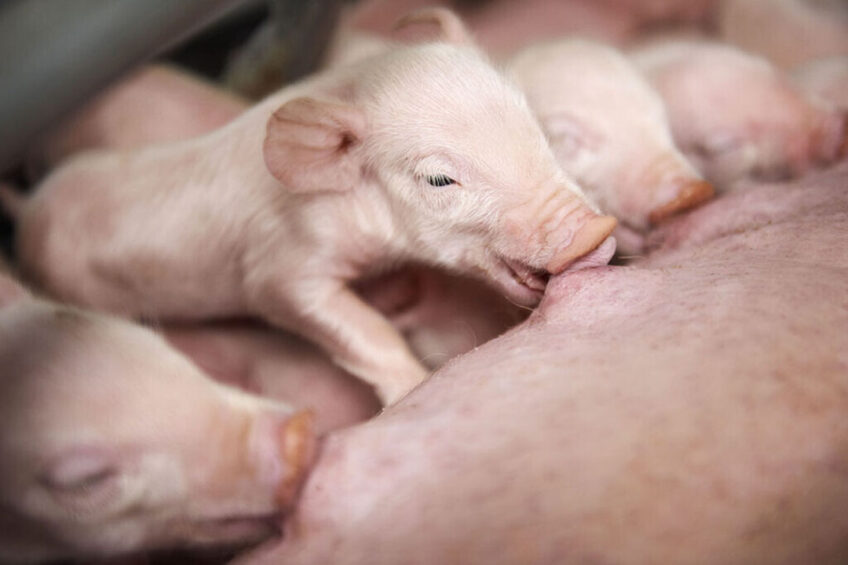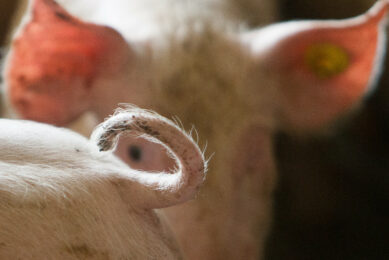40% of R&D resources are dedicated to improving piglet survival

To secure a strong, competitive pig production, the Danish Agriculture & Food Council invests extra resources to improve piglet survival. The goal is to increase survival from birth to slaughter, while maintaining a high economic return for pig producers.
In the last year, a striking 40% of R&D resources in Breeding & Genetics at the Danish Agriculture & Food Council has been dedicated to finding a future-proof solution to further increase piglet survival. Christian Sørensen, Senior Scientist at Breeding & Genetics, explains: “We use huge amounts of data on litter size and piglet survival from DanBred’s breeding and multiplication herds. We evaluate several different ways of using these datasets to consider survival and fertility traits now and in the future pig production.”
Updated breeding goals
Since 2005, piglet survival in DanBred’s breeding and multiplication herds has improved considerably as a consequence of selecting for live piglets at day 5 after farrowing (LP5). Simultaneously, DanBred pig producers have seen a great improvement in the traits of their finishers, which has given them an economic advantage.
Raising the economic weight for LP5
The first step to secure a more long-term solution was to raise the economic weight for LP5, which combines piglet survival and litter size, by 33% for DanBred Landrace, DanBred Yorkshire and DanBred Duroc in the spring of 2021. This correction in the economic weighing will increase the pressure on piglet survival, while maintaining a balanced breeding goal.
Moreover, a new multi-trait model has been developed, and was implemented in the DanBred routine index calculation last year. These improvements are part of DanBred’s continuous work to improve piglet survival while maintaining the economic progress for pig producers all around the world.
Separating number of piglets born and survival
Piglet survival is investigated on different levels – on a litter level as well as on a piglet level – to find the optimal solution. “Our preliminary results indicate that LP5 can be split into 2 – where the number of piglets born and survival until day 5 are handled differently in our statistical models. We expect this new way of handling litter size and piglet survival to increase the breeding progress for survival,” says Tage Ostersen, Department Manager in Breeding & Genetics, Danish Agriculture & Food Council.
An important tool: simulation
To find the best way of improving survival rates, Breeding & Genetics use a simulation tool to simulate the entire breeding system – from the DNA-string to the number of breeding animals in the herds, on Bøgildgård (DanBred’s boar testing station), and on AI-stations for all 3 DanBred purebred breeds. This simulation tool gives an important insight into how the overall breeding progress will react to including a new trait in the selection.
We look at all traits in the breeding goal to ensure we get the right balance between the traits
“By using a complex computer programme, we can imitate the 3 breeds with the breeding system’s characteristics. This way, we can test many different breeding scenarios, and thereby, recommend the right strategy to ensure maximum breeding progress. In this case, increasing piglet survival while ensuring economic profit for the pig producers. Actually, we look at all traits in the breeding goal to ensure we get the right balance between the traits,” says Christian Sørensen.
Continuously improving survivability
Breeding & Genetics at the Danish Agriculture & Food Council has a professional collaboration with Aarhus University in Copenhagen, Denmark, which contributes to the researchers’ focused work to improve piglet survival. All the increased efforts and resources are targeted at finding a future-proof solution to continue increasing piglet survival while maintaining the economic progress for pig producers – to secure a strong, competitive pig production worldwide.
While great efforts are targeted at piglet survival, DanBred also effectively focuses on improving survival all the way to slaughter. Improving survival until slaughter will not only affect the pig producers’ economy but will also have an impact on the health and welfare of the pigs.











